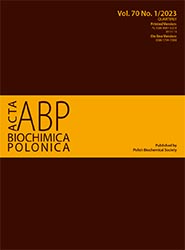Knockdown of CD44 inhibits proliferation, migration, and invasiveness in hepatocellular carcinoma cells by modulating CXCR4/Wnt/β-Catenin Axis
Abstract
Hepatocellular carcinoma (HCC) has high mortality and incidence worldwide. The molecular mechanism associated with HCC is largely unexplored. Objective: To investigate the impact of CD44 knock-down on the proliferation, migration, and invasiveness in HCC cells. Methods: Colony formation and MTT assay were used to observe cellular proliferation and viability. In addition, cellular invasion and migration were studied by Transwell and wound healing assays respectively. Finally, western blotting was utilized to check the protein expression levels. Results: The cellular proliferation, invasion and metastasis in Huh7 cells were inhibited after the silencing of CD44. Furthermore, expression levels of MMP-2, MMP-9, CXCR4, GSK-3β and β-catenin was significantly decreased. However, opposite results were demonstrated when CD44 was overexpressed. Conclusions: Interference with the expression of CD44 significantly inhibits the invasion and metastasis in the HCC cell line, Huh7. Furthermore, CD44 was found to regulate the expression of MMP-2, MMP-9, CXCL12, CXCR4 and Wnt/β-catenin signal pathway.
Acta Biochimica Polonica is an OpenAccess quarterly and publishes four issues a year. All contents are distributed under the Creative Commons Attribution-ShareAlike 4.0 International (CC BY 4.0) license. Everybody may use the content following terms: Attribution — You must give appropriate credit, provide a link to the license, and indicate if changes were made. You may do so in any reasonable manner, but not in any way that suggests the licensor endorses you or your use.
Copyright for all published papers © stays with the authors.
Copyright for the journal: © Polish Biochemical Society.


